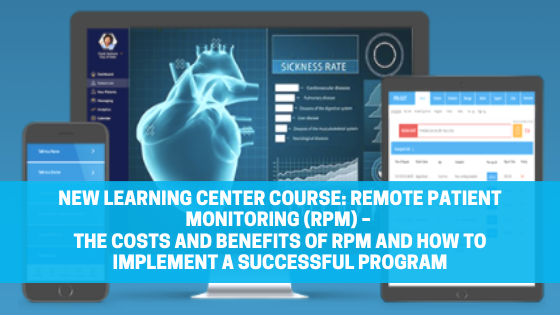Triage Logic has a new triage nurse learning center course available on remote patient monitoring (RPM). The course explores the following: a. What is RPM; b. the benefits of an RPM system to both the patient and the provider; and c. how can doctor offices implement a program with minimum staff time by using both clinical and non-clinical contact centers.
In the United States, 6 in 10 adults in the United States suffer from some form of a chronic disease, such as obesity, diabetes, or heart disease. 4 in 10 of those adults have two or more chronic conditions. Chronic diseases are one of the leading causes of death and disability in the United States and have a staggering cost for the healthcare system. Chronic diseases are responsible for ¾ of the 3.5 trillion dollars spent on health care each year.
Remote patient monitoring is a system for managing chronic diseases and improving health outcomes amongst patients with chronic health conditions. Patients wear an electronic device that measures and transmits information to doctors. Doctors receive regular updates on the patient’s condition. RPM can be an effective strategy for improving health outcomes amongst patients with chronic health conditions.
What are the benefits of remote patient monitoring?
For Patients
RPM can increase safety and convenience for patients. Doctors receive regular updates on the patient’s condition without the patient having to go to the doctor’s office. Remote Patient Monitoring allows doctors to receive and review health trend data, allowing for early intervention and better health outcomes. RPM can also increase patient compliance by encouraging them to measure their condition regularly and comply with medical advice.
For Providers
Remote Patient Monitoring is a cost-effective strategy for providers to monitor patients and improve health outcomes. Monitoring devices and remote nurse services inform the provider when there are anomalies or potential problems. And efficient RPM system can improve patient care while reducing workload on physicians. Remote Patient Monitoring may also increase revenue for providers through insurance reimbursements.
The role of call centers
With RPM, the physician typically educates the patient about the device and sends them home to use it. Information gets transmitted from the device to the provider. However, devices tend to send many alerts and not all of them need to be reviewed by a physician. Call centers can help monitor information and verify it with the patients to determine abnormal results that may require the physician to see the patient for further evaluation.
Non-clinical staff in call centers can review information regularly and decrease the work for clinical staff. Often a patient calls because they have not put on the device properly. Non-clinical staff can call patients back about device malfunctions or education related to the device. They can also refer alerts to doctors based on rules the doctor has given.
Triage nurses can also help patients and reduce the workload for doctor offices and hospitals. They can use general symptom-based protocols, such as Schmidt-Thompson protocols, to make sure the patient is ok from an overall perspective. Once the overall health has been established, the nurses then need to use disease and device specific protocols to determine which patients require the attention of a physician. Nurse triage software that is customized to include rpm protocols allow nurses to follow protocols, ask the right questions, and come to the right disposition. Nurse triage software also allows nurses to document calls in an organized way that can be attached or embedded in existing EMR.
Do you want help implementing a successful remote patient monitoring program? Contact us today to discuss a solution to work with your office and patient needs.






